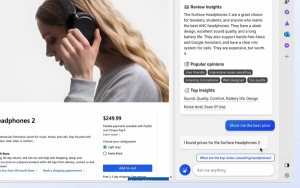
As a business owner, you will be forced to negotiate with suppliers, employees, and customers. Being a good negotiator, either to get the most amount of money for a product or service from the customer or the most value for products or service you buy from a vendor, requires some basic knowledge of business negotiations. Here are some basic concepts that every business owner needs to know when trying to negotiate the best deals possible.
Contracts
Many of us have been conditioned to believe that a contract is a “take it or leave it” proposition. Either you accept the terms of a contract or there is no deal. However, contracts should be looked at as a negotiation, not a gate.
Most contracts are issued by the seller rather than the buyer. Contracts are written to protect the interests of the seller issuing the contract. As a result, they are heavily weighted in the seller’s favor.
It should be noted that by the time most buyers get to the contract phase, they are emotionally invested in the solution, and as a result, most only skim over the contract and simply accept it as is. However, contracts are just a step in the business negotiation process. Just because you get a contract doesn’t mean you have to accept all the terms.
Read every contract thoroughly, and line-out and initial the clauses that you do not agree with. Remember- by the time a contract is presented to the buyer, the seller is as equally emotionally committed to the sale as well. The salesperson has already visualized receiving their commission. If the buyer does not agree to buy based on the terms of the contract, the sale does not happen. Therefore, don’t be afraid to redline and initial any sections of a contract that you do not like.
The worst that will happen is that the seller will say no. If that is the case, you can sign the contract anyway as is since you were going to do that anyway, or you could walk away. Most businesses will want to make the sale and agree to your redlines. What do you have to lose?
Fear of Rejection
The term negotiation is often associated with negative feelings because it is associated with the fear of rejection. Most people associate rejections with failure, and according to my clients, it is one of the primary reasons they hate sales. However, a simple piece of advice I once received from a mentor changed how I felt about sales- “not all rejection is the same”.
When you ask someone that you are attracted to for a date and they say “no”, it hurts because they have rejected you personally. However, when it comes to sales, rejection is not the same because any rejection is not personal. When your sales pitch is rejected, the other party is saying that they do not like or need what you are selling. Their rejection has nothing to do with you personally, and everything to do with what you are selling. In fact, human conditioning concerning sales manifests itself as a built-in knee-jerk reaction to say “no”, because we want to be a buyer and not feel like we are being sold to. Therefore, when it comes to fearing business negotiations, remember that any rejection is not personal.
One-off vs Long-Term Business Negotiations
There are two types of situations where business negotiations take place.
- One-off business negotiations where the only goal is to get the best deal by whatever means possible.
- Long-term negotiation where you want to have a fair deal that makes both parties happy.
One-off business negotiations assume that both parties are adversaries. Neither party really cares about the other party’s position. In one-off business negotiations, the parties frequently resort to the use of trickery and misrepresentation in an attempt to get the best deal possible for themselves.
One-off business negotiations are often the domain of “business to consumer” (B2C) or “consumer to consumer” (C2C) sales, such as when you try to buy or sell a vehicle. The seller wants the buyer to pay the highest price. The buyer, on the other hand, wants the lowest price possible. Since each party is unlikely to run into the other person in the future and they each have their own goals, they do not mind hurting the other party if it results in a better deal for them personally.
One-off business negotiations in a “business to business” (B2B) situation is rarer. One of the problems with a no-holes-barred, one-off negotiation, when you are the seller, is that even if you think you got a great deal on paper, the other party frequently feels cheated and is much more likely to either try to sabotage the deal or not live up to the expectations.
The ideal negotiation strategy, especially in B2B transactions, is to strive for a fair deal for both parties. Even if you think it is a one-off deal, you never know when your paths will cross again. Long-term business negotiations generally involve alternative and creative solutions. Long-term solutions generally involve much more than simple pricing.
Distributed vs Integrated Negotiations
Negotiations can fall into one of 2 basic camps- Distributive negotiations and Integrative negotiations
Distributive negotiation is the process of dividing up the value pie during negotiations. Distributive negotiation can be thought of as haggling—the back-and-forth exchange of offers, typically price offers.
Distributive negotiations are based on the idea that one party’s gain means the other party’s loss. In other words, your goal is to negotiate in such a way that when you reach an agreement, you have given up less than the other party. Your goal is to win as much as you can during the negotiation, which typically means that the other party has to give up something.
Distributed negotiations are primarily the domain of one-off business negotiations, where the price is the primary point of negotiations.
Unlike in distributive negotiations where each party tries to negotiate a single item such as price. Integrative negotiation typically entails two or more issues to be negotiated. Integrative negotiations combine the aims and goals of all involved negotiation participants through creative and collaborative problem-solving. Integrative negotiations are the primary domain of long-term negotiations, where relationships usually take precedence.
Business Negotiations Outcomes
There are 5 basic kinds of negotiation outcomes
- Win-Lose – This is the winner-take-all, one-off type negotiations. Win-Lose outcomes generally involve distributive negotiation, where one party’s gain is the other party’s loss. Both parties want to claim the most amount of value from the negotiation.
- Lose-Lose – This is where neither party has their main issues satisfied at the end of a deal. In a Lose-Lose outcome, both parties leave resources on the table after a negotiation and fail to recognize or exploit more creative options that would lead to a potential ‘Win-Win’ negotiated outcome.
Legal battles, such as a couple going through a divorce, are examples of a lose-lose negotiation. In the end, both parties are really not happy with the deal and they resent the other party for not capitulating and have a sour taste in their mouth and feel they got a raw deal. Neither party is likely to want to negotiate further with the other party in the future.
- Compromise – This is similar to lose-lose. The difference is that in the end, both parties made a series of concessions and did not get what they wanted, but are okay with the outcome. Each party knows that the other party didn’t get exactly what they wanted either.
For example, you agree to go out to dinner with your spouse. You want seafood but they want Mexican food. You can’t agree and order in a pizza instead.
With a compromise negotiation outcome, both parties will most likely agree to further negotiations.
- No Deal – This is where each party’s BATNA (Best Alternative To a Negotiated Agreement) is better than the deal on the table, and both parties agree to walk away. In the “no-deal”, neither party is left with any bad taste or animosity toward the other party and would be willing to negotiate with the other party in the future.
- Win-Win – This is the optimum type of negotiation, where both parties leave the bargaining table happy with the deal that was struck. When we think about win-win, many people think that it is only about getting what they wanted going into the negotiations. However, in many cases, neither party may get the solution they came into the negotiation with, but a third type of creative option was discovered during the business negotiations process that both parties are happy with accepting.
How can you apply your basic business negotiations knowledge in your next business dealing?
Business & Finance Articles on Business 2 Community
(42)
Report Post






